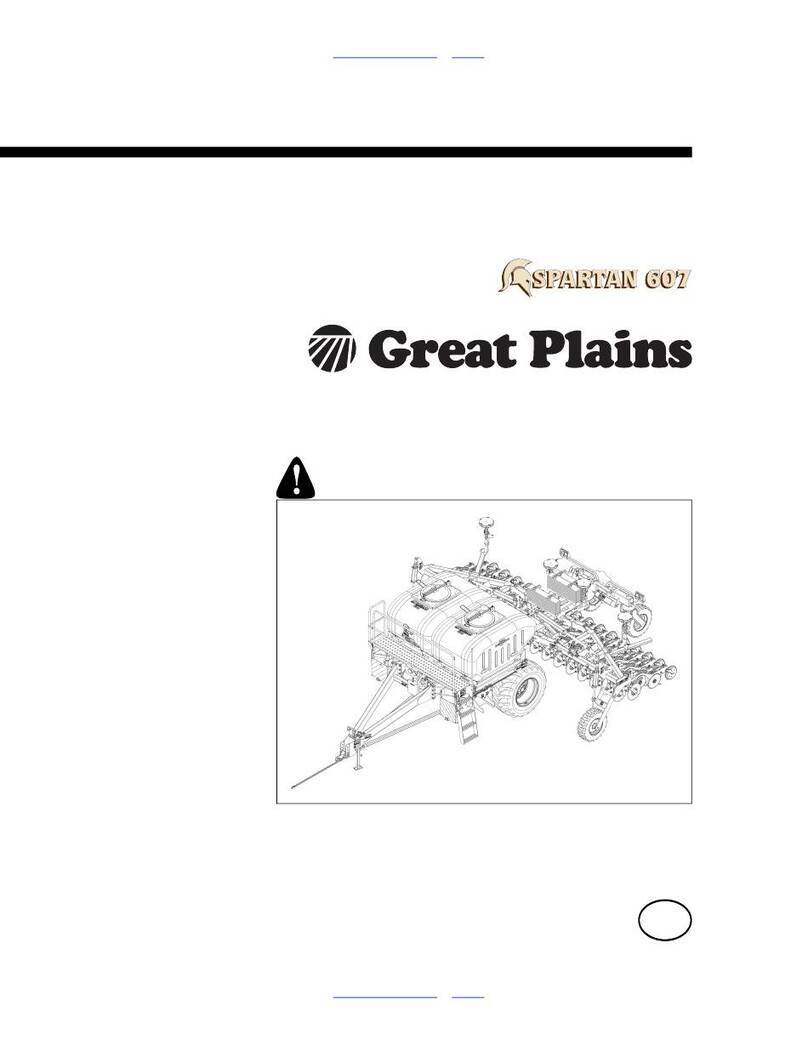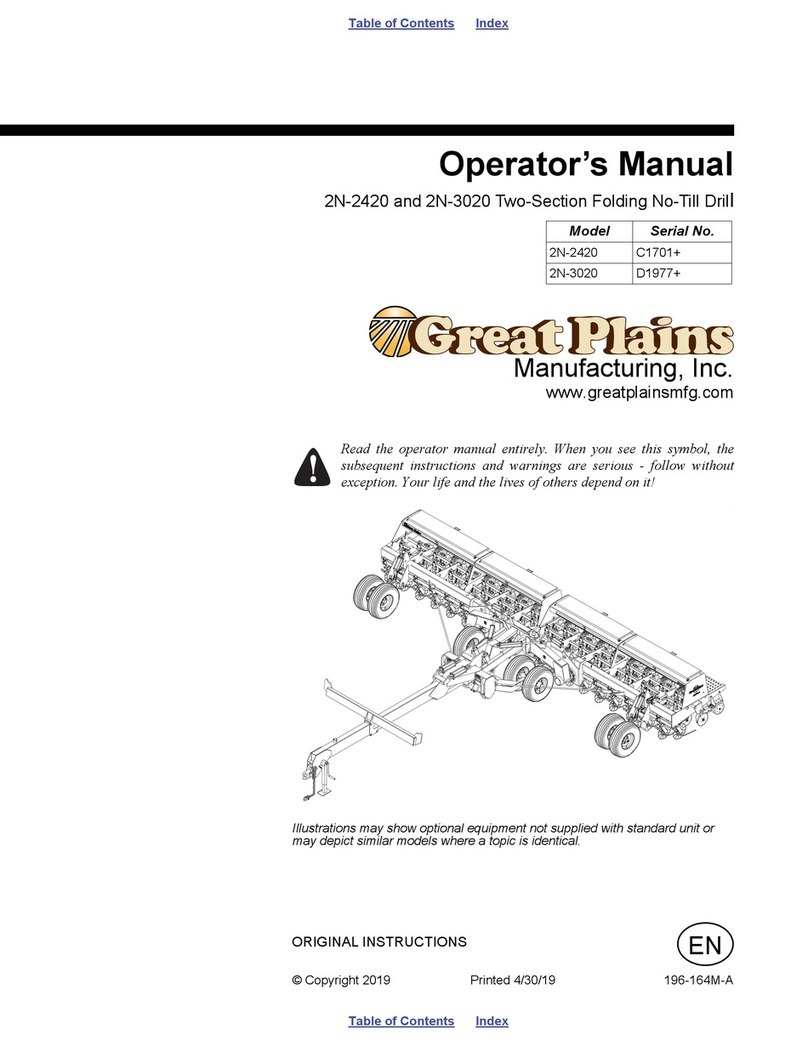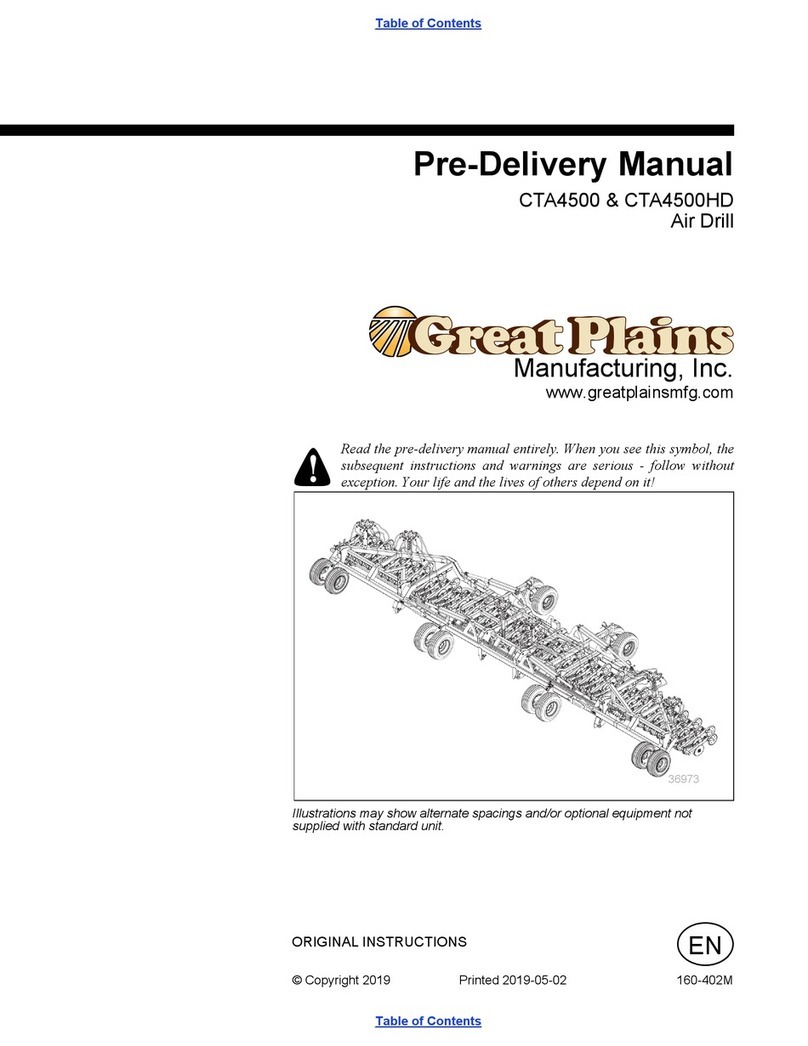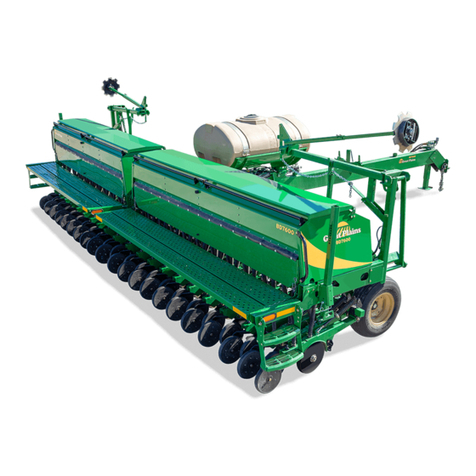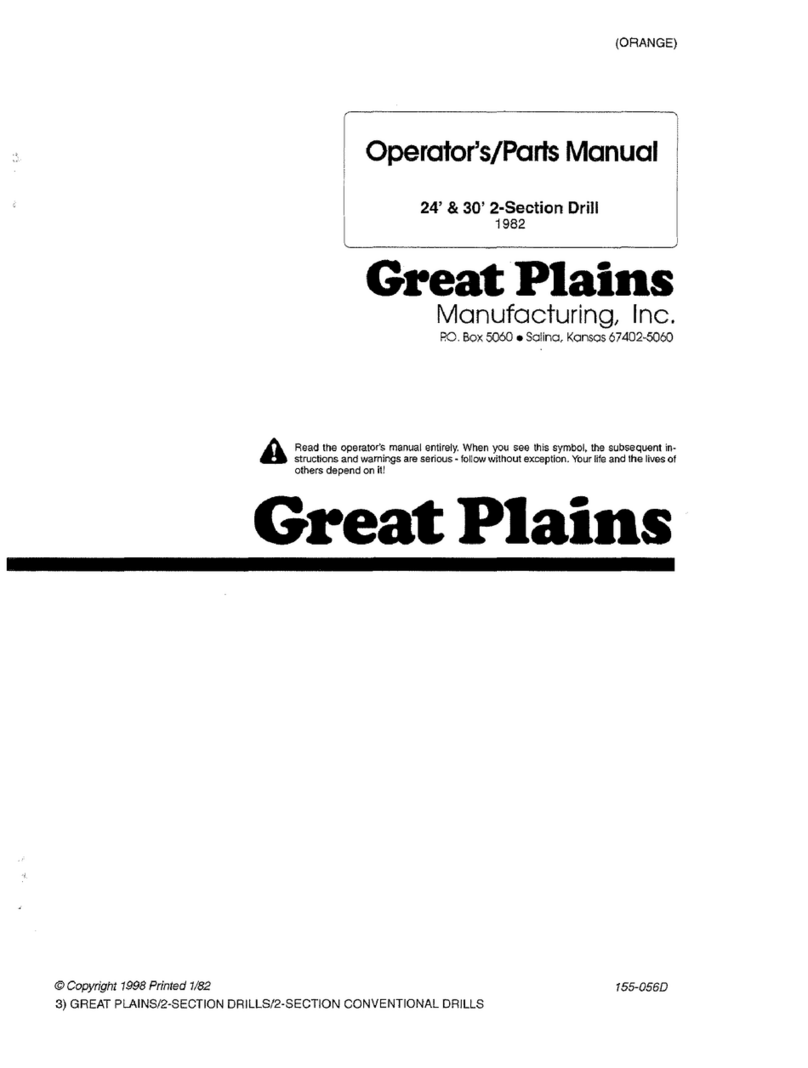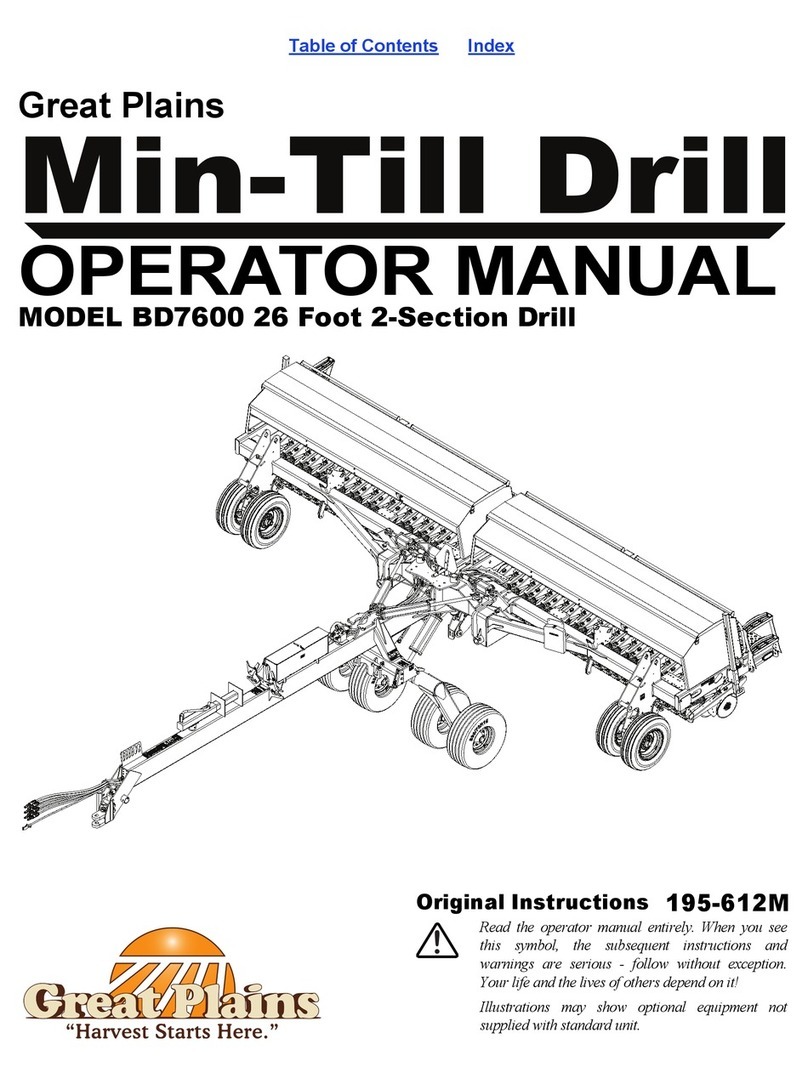
1206NT Cover iii
2020-12-03 Cover 150-166Q
© Copyright 2012, 2014, 2015, 2017 All rights Reserved
Great Plains Manufacturing, Inc. provides this publication “as is” without warranty of any kind, either expressed or implied. While every precaution has been
taken in the preparation of this manual, Great Plains Manufacturing, Inc. assumes no responsibility for errors or omissions. Neither is any liability assumed
for damages resulting from the use of the information contained herein. Great Plains Manufacturing, Inc. reserves the right to revise and improve its products
as it sees fit. This publication describes the state of this product at the time of its publication, and may not reflect the product in the future.
Trademarks of Great Plains Manufacturing, Inc. include: AccuShot, Max-Chisel, Row-Pro,
Singulator Plus, Short Disk, Swath Command, Terra-Tine, Ultra-Chisel, and X-Press.
Registered Trademarks of Great Plains Manufacturing, Inc. include: Air-Pro, Clear-Shot, Discovator, Great Plains, Land Pride, MeterCone,
Nutri-Pro, Seed-Lok, Solid Stand, Terra-Guard, Turbo-Chisel, Turbo-Chopper, Turbo-Max, Turbo-Till, Ultra-Till, Whirlfilter, and Yield-Pro.
Brand and Product Names that appear and are owned by others are trademarks of their respective owners.
Printed in the United States of America
Table of Contents
Important Safety Information.................................................1
Safety Decals ....................................................................5
Introduction.............................................................................6
Description of Unit .............................................................6
Models covered .................................................................6
Document Family ......................................................6
Using This Manual.............................................................7
Definitions..........................................................................7
Preparation..............................................................................8
Tools Required ..................................................................8
Assembly and Setup Assistance .......................................8
Unloading the Truck ...............................................................9
Assembly...............................................................................10
Tools Required ................................................................10
Pre-Assembly Checklist...................................................10
Removing Tongue, if Shipped Attached ..........................11
Prepare Folding Tongue..................................................11
Install Tongue ..................................................................12
Lighting and Hydraulic Hoses..........................................13
Route Hoses and Harnesses ...................................13
Setup......................................................................................15
Hitching Tractor to Drill....................................................15
Clevis Hitch Assembly..............................................15
Adjust Hitch Height...................................................15
Hitch Heights............................................................16
Adjusting Either Hitch...............................................17
Safety Chain.............................................................18
Jack Storage ............................................................18
Hydraulic Hookup.....................................................19
Transport Lift Cylinder Flow Setting .........................19
Bleeding Hydraulics .................................................20
Rephasing Cylinders ................................................21
Leveling Drill.............................................................21
Appendix ...............................................................................22
Tire Size and Pressure....................................................22
Torque Values Chart .......................................................22
Hydraulic Connectors and Torque...................................23


